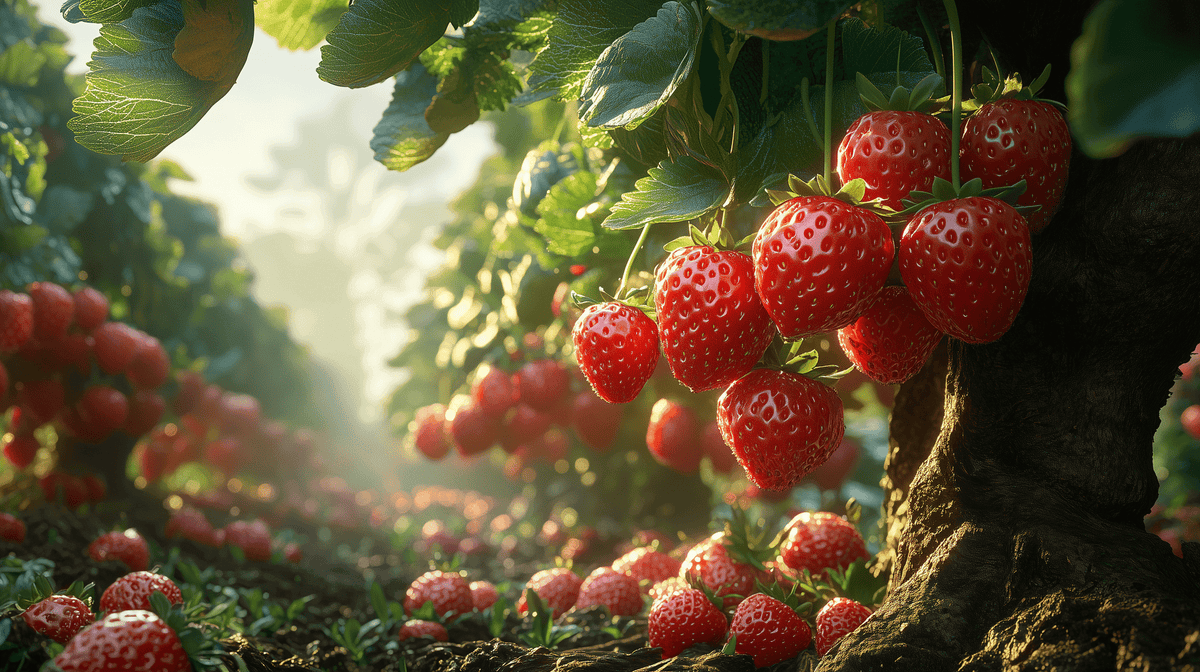
Strawberry Tree: Benefits, Care Tips, and Growing Guide
|
|
Time to read 5 min
|
|
Time to read 5 min
The Strawberry Tree (Arbutus unedo) is an ornamental evergreen plant known for its unique strawberry-like fruits, glossy leaves, and bell-shaped flowers. This versatile tree offers a range of benefits, including its aesthetic appeal, edible and nutritious fruit, and low maintenance requirements. The Strawberry Tree is also highly adaptable to various soil types and climates, making it an excellent choice for diverse gardening environments. With proper care, including choosing the right planting location, regular watering, and occasional pruning, the Strawberry Tree can thrive and provide enjoyment for years. Additionally, its ability to attract wildlife and its drought tolerance make it a sustainable option for gardens and landscapes.
Scientifically known as Arbutus unedo, is a unique and charming addition to any garden or landscape. Despite its name, the Strawberry Tree is not related to the common strawberry plant but produces small, round fruits that resemble strawberries in appearance. Native to the Mediterranean region, this versatile evergreen tree is prized for its ornamental beauty, edible fruit, and minimal maintenance requirements. In this comprehensive guide, we'll explore the many benefits of the Strawberry Tree, provide care tips to ensure its health and vitality, and offer a step-by-step growing guide for those interested in cultivating this remarkable plant.
The Strawberry Tree offers a range of benefits that make it an appealing choice for gardeners and landscapers alike. Here are some of the key advantages:
To ensure that your Strawberry Tree thrives and continues to offer its many benefits, it's essential to provide it with proper care. Here are some tips to help you keep your tree healthy and vibrant:
Choose a location with full sun to partial shade for your Strawberry Tree. While the tree can tolerate some shade, it will produce more flowers and fruit when exposed to ample sunlight. Ensure that the planting site has well-drained soil, as the tree does not tolerate waterlogged conditions. If your soil is heavy clay, consider amending it with organic matter to improve drainage.
During the first year after planting, water your Strawberry Tree regularly to help it establish a strong root system. Once established, the tree is drought-tolerant and requires minimal watering. In particularly dry periods, occasional deep watering will help maintain its health. Be careful not to overwater, as this can lead to root rot.
Pruning is generally not necessary for the Strawberry Tree, but light pruning can be done to maintain its shape and remove any dead or damaged branches. The best time to prune is in late winter or early spring before the new growth begins. Avoid heavy pruning, as this can reduce the tree's flowering and fruiting potential.
The Strawberry Tree typically does not require regular fertilization, especially if it is planted in nutrient-rich soil. However, you can apply a balanced, slow-release fertilizer in the spring to promote healthy growth. Be cautious not to over-fertilize, as this can lead to excessive foliage growth at the expense of flowers and fruit.
If you're interested in growing your own Strawberry Tree, follow these steps to ensure successful cultivation:
Technology is nothing. What’s important is that you have a faith in people, that they’re basically good and smart, and if you give them tools, they’ll do wonderful things with them.
The Strawberry Tree is a versatile and rewarding plant that offers a wealth of benefits to gardeners and landscapers. Its ornamental appeal, edible fruit, and low maintenance requirements make it an excellent choice for those looking to add beauty and sustainability to their garden. By following the care tips and growing guide provided in this article, you can successfully cultivate a healthy and productive Strawberry Tree, enjoying its many rewards for years to come.
Yes, the fruit of the Strawberry Tree is edible. It has a unique, mildly sweet flavor and can be eaten fresh or used in jams, jellies, and beverages.
The Strawberry Tree is low maintenance, requiring minimal watering once established and little to no pruning. It's also resistant to many pests and diseases.
Yes, the Strawberry Tree is adaptable to various climates, thriving in Mediterranean conditions but also capable of growing in temperate regions with well-drained soil.
farming, farming, farming, farming, farming, farming, farming, farming, farming, farming

